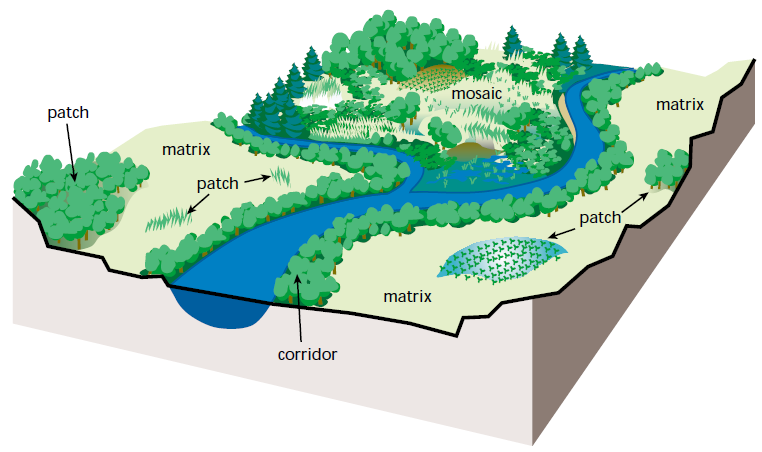This week was spent continuing the work on Lab 2 (analyzing land use changes in Edmonton from 1966-1976) and learning about key landscape ecology concepts.
Landscape ecology is a relatively new discipline which studies landscapes, and more importantly, the relationship between spatial patterns found on landscapes and the related ecological processes. One example used in the class was the spatial pattern of where people with different personality types tend to aggregate in London. For instance, extroverts were far more likely to live in the center of the city, while introverts in the suburbs.
The primary aim of landscape ecology is to understand how ecological processes work and create specific spatial patterns. For example, it would be useful to know why an invasive species has high populations in a specific area, so that we can prevent repeating a similar situation elsewhere. In this case, we can see the spatial pattern – a concentration of an invasive species (like fire ants) – and use that to figure out/understand the process behind it.
Some important concepts that were discussed this week:
Landscape – “an area that is spatially heterogeneous in at least one factor of interest”
Stationarity (first and second-order) -> a fundamental assumption which supposes that the processes that placement of an object or event do not change over space – differences in values may depend on relative location, but not absolute location -> only works for homogeneous landscapes
Isotropic (no directional bias) / anisotropic (has direction bias)
Process Types:
- Biotic – processes caused by living things (non-human) – e.g. pine beetle infestation
- Abiotic – processes caused by non-living things, such as wind or precipitation
- Human – human impacts, like logging or agriculture
- Disturbances – forest fires, floods, etc
And to close, a couple of interesting ideas/considerations relating to landscape ecology.
Biotic perspectives – thinking like the animal if you’re looking at habitat for example
Criminal perspectives – people tend to commit crimes in areas that fit their socio-economic background – geographic profiling

